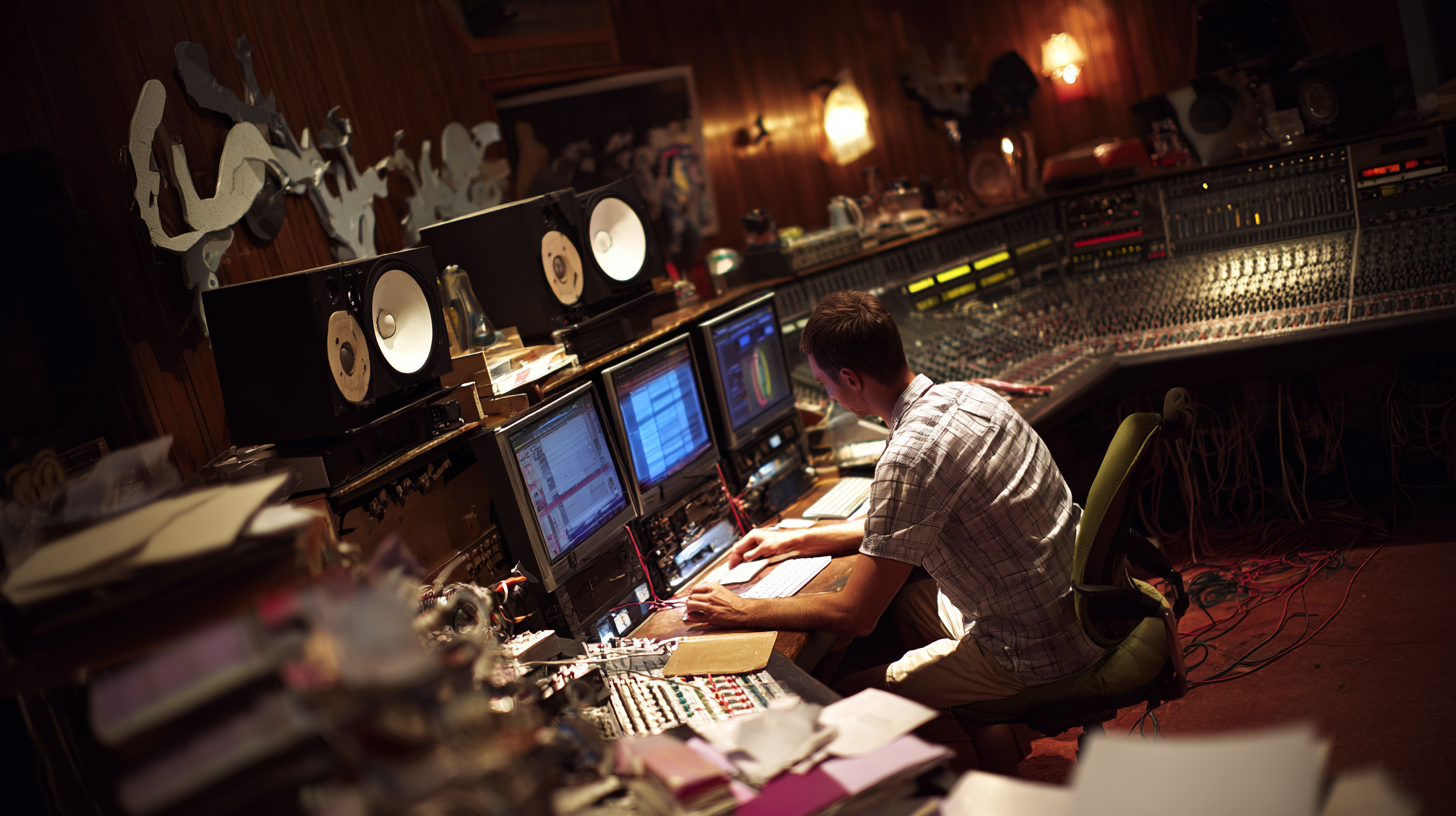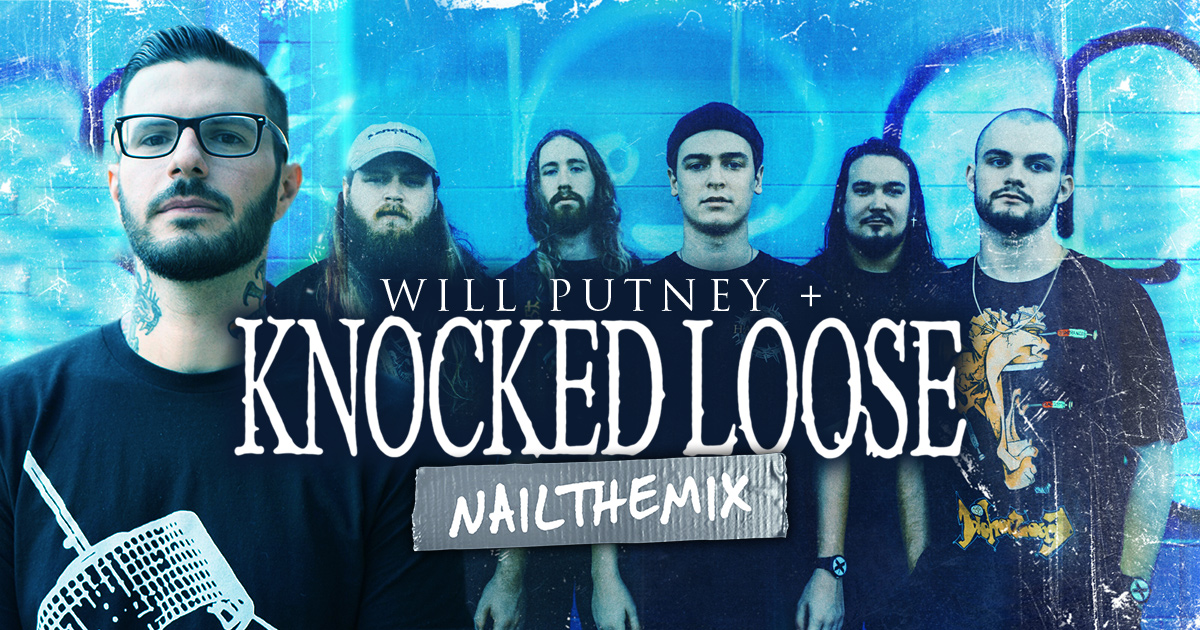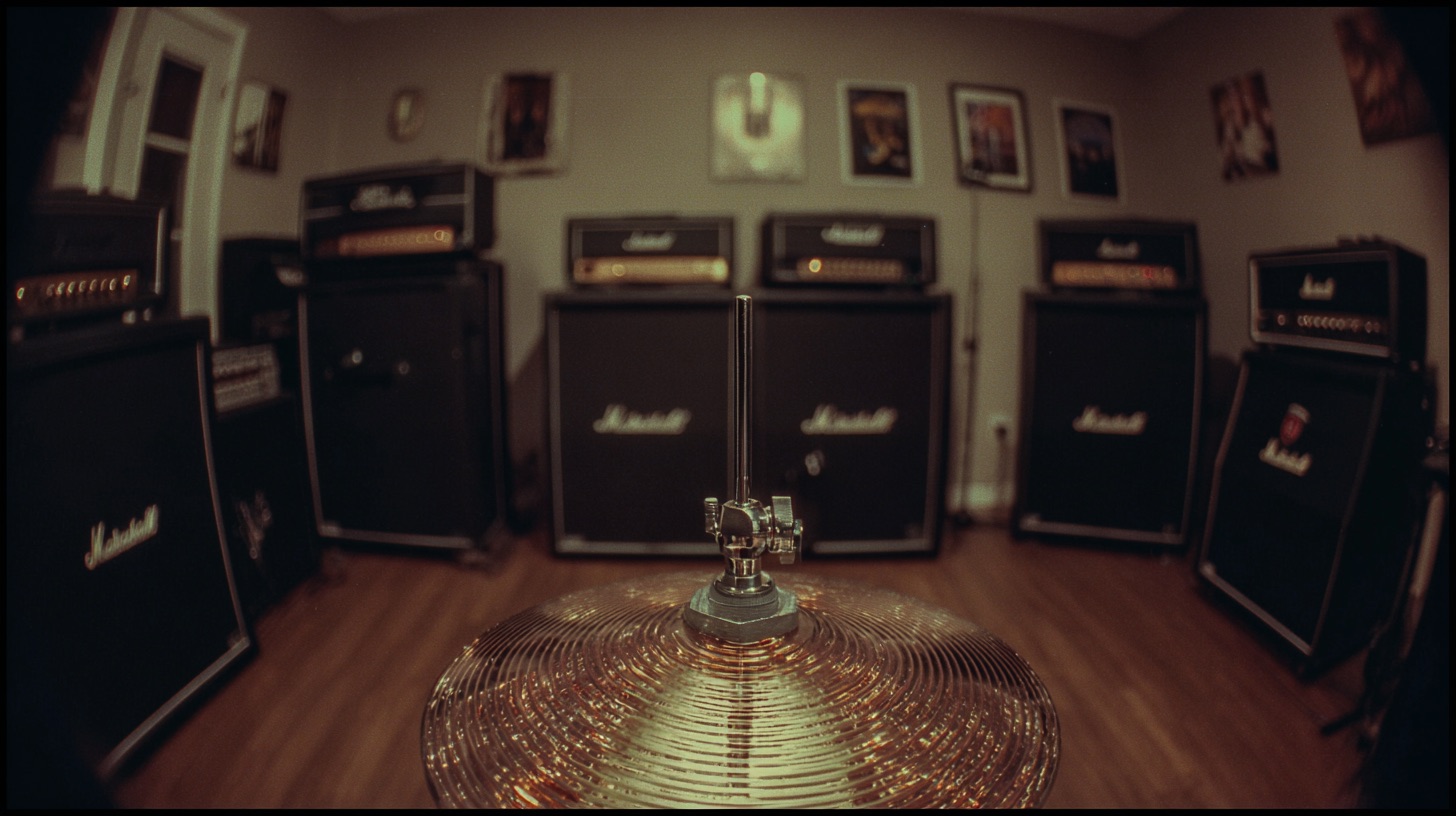
What is Timbre in Music? Sculpting Aggressive Metal Tones
Nail The Mix Staff
Ever cranked a killer metal track and wondered how every damn instrument sounds so distinct, so powerful, yet all perfectly glued together in that wall of sound? A huge part of that magic, besides killer riffs and inhuman drumming, comes down to one crucial concept: timbre. Yeah, it sounds a bit like a fancy word your music theory teacher threw around, but trust us, understanding and manipulating timbre is what separates an amateur demo from a skull-crushing, professional-sounding metal mix.
So, What Exactly IS Timbre? (And Why Metalheads Should Care)
In simple terms, timbre (pronounced TAM-ber, or TIM-ber, who cares as long as your mix slams) is the sonic fingerprint of a sound. It’s what makes a Les Paul roaring through a cranked Marshall JCM800 sound worlds apart from a Fender Stratocaster plugged into a clean Twin Reverb, even if they’re both blasting out the same A note at the same volume. It’s the character, the color, the texture of the sound.
Why should you, a metal producer, give a damn? Because:
- Clarity is King: In a dense metal mix with bajillion-MPH kick drums, downtuned 8-string guitars, and demonic vocals, timbre is how you make each instrument carve out its own space. Without distinct timbres, you get mud. Glorious, unlistenable mud.
- Signature Sounds: That instantly recognizable Periphery guitar "djent," the chest-thumping kick in a Meshuggah track, the searing vocal fry of your favorite metalcore vocalist – these are all defined by their unique timbres. Mastering timbre helps you achieve those sounds and eventually develop your own.
- Emotional Impact: A bright, cutting guitar timbre screams aggression. A dark, resonant snare can sound ominous. Timbre is a powerful tool to evoke the right feeling for the song.
The Building Blocks of Timbre: It's Not Magic, It's Science (Mostly)
Alright, so timbre isn't some mystical force. It's largely down to a few key physical properties of sound waves. Understanding these will give you the power to shape sound like a sonic sorcerer.
Harmonics & Overtones: The Secret Sauce of Tone
Every note you hear isn't just one single frequency. It’s made up of a fundamental frequency (the main pitch you perceive) and a whole series of harmonics or overtones – additional frequencies that are multiples of the fundamental. The relative loudness and complexity of these harmonics are what give an instrument its unique timbral signature.
Think about it: a relatively pure sine wave (mostly fundamental, few harmonics) sounds pretty plain. Now, plug your guitar into a high-gain amp like a Peavey 6505 or a plugin like the Neural DSP Archetype: Gojira. That sweet, sweet distortion you’re hearing? It's massively adding and emphasizing harmonics, creating that thick, rich, aggressive timbre essential for metal.
Pro Tip: Fire up a spectrum analyzer plugin (like the free Voxengo SPAN or the one built into FabFilter Pro-Q 3) on a distorted guitar track. You'll literally see that dense forest of harmonics. That's the timbre in visual form!
ADSR Envelope: Shaping the Life of a Sound
The ADSR envelope describes how a sound's amplitude (loudness) changes over time:
- Attack: How quickly the sound reaches its peak loudness.
- Decay: How quickly it drops from the peak to the sustain level.
- Sustain: The level at which the sound holds while the note is ongoing.
- Release: How quickly the sound fades to silence after the note ends.
ADSR is HUGE for timbre.
- Guitars: Those super-tight, palm-muted djent chugs? That’s a fast attack and a very quick decay. A soaring lead guitar part will have more sustain.
- Drums: The initial crack of a snare is all about a sharp attack. You can emphasize this with a transient shaper plugin like the SPL Transient Designer Plus or Native Instruments Transient Master. The difference between a kick drum that’s all "click" (fast attack, short decay on the beater sound) versus "boom" (more sustain from the shell) is largely an ADSR game.
Transients: The Initial SMACK!
Closely related to the attack phase, transients are the very short, high-energy initial bursts of sound. In metal, the transient information from your kick, snare, and even picked guitar notes is what gives them punch and definition. If your transients get lost or smeared, your mix will sound soft and lack impact. Again, transient shapers are your best friends here, allowing you to either sharpen or soften these initial hits to sculpt the percussive character of your instruments.
Your Toolbox: How to Bend Timbre to Your Will in Metal Production
Okay, theory's cool, but how do we actually do this stuff? Here’s where your plugins and gear come into play.
EQ: The Master Timbre Sculptor
Equalization is your number one tool for directly manipulating the harmonic content of a sound, and therefore, its timbre. It's not just for "fixing" problems; it's for creatively shaping tone.
- Adding "Air" vs. "Harshness": Want your cymbals to shimmer? A gentle high-shelf boost around 10-12kHz with a smooth EQ like a Maag EQ4 emulation (Plugin Alliance has a great one) can add "air." But be careful – boosting the wrong high frequencies (like 3-5kHz) can make things sound harsh and painful.
- The Metal Scoop (and its opposite): The classic metal rhythm guitar often involves a "scoop" – cutting mid-range frequencies (say, 400Hz-800Hz) with a parametric EQ like FabFilter Pro-Q 3 to make room for vocals and add aggression. For leads, you might do the opposite, boosting the upper mids (1-3kHz) to help them cut through.
- Taming "Guitar Fizz": That nasty, static-like high-frequency hash on some distorted guitars? You can surgically remove it. Use a narrow Q (bandwidth) on your EQ and sweep around in the 6kHz-12kHz range to find the offending frequencies, then pull them down. This cleans up the timbre without losing aggression – something Fredrik Nordström is a master at.
- High-Pass Filtering (HPF): Essential for metal. HPF everything that doesn’t need to live in the sub-bass realm. Guitars often get HPF'd around 80-120Hz, vocals around 100Hz (or higher for some screamers). This tightens up the low end and changes the perceived timbre by removing unnecessary rumble.
For more in-depth EQ strategies for metal, check out our EQ Strategies for Mixing Modern Metal hub page.
Distortion & Saturation: Adding Grit, Aggression, and Harmonics
We already talked about guitar distortion, but these tools are timbre-changers for everything:
- Snare Saturation: Want more crack and body from your snare? Try driving it through a saturation plugin like Soundtoys Decapitator (try modes 'A' or 'E') or FabFilter Saturn 2. This adds harmonics that make it cut through and sound more aggressive.
- Bass Obliteration (in a good way): To make your bass heard against a wall of downtuned guitars, you often need to distort or heavily saturate it. Plugins like the Darkglass Ultra or a classic SansAmp Bass Driver DI emulation can add that mid-range grind and upper harmonics that help it slice through.
- Vocal Aggression: For extreme vocals, parallel distortion is a killer trick. Send your vocal track to an auxiliary bus, slap on a gnarly distortion (maybe even a guitar amp sim like Amplitube or BIAS FX on a moderate setting), EQ it so it’s mostly mids and highs, then blend that subtly underneath your main vocal. Instant aggression and character without losing all intelligibility.
Compression: More Than Just Volume Control
Compression doesn’t just control dynamics; it fundamentally alters the ADSR and thus the timbre of a sound.
- Attack & Release are Key:
- A fast attack on a compressor (like a Waves CLA-76 "Bluey" on drums) will clamp down on transients, making things sound thicker, potentially taming spikiness, or making room hits more "thuddy" by emphasizing the sustain.
- A slower attack lets the initial transient pop through before the compression kicks in, which can make kicks and snares sound punchier (try this with an API 2500-style compressor on your drum bus).
- Evening Out Performance: On bass guitar, compression can even out the volume of notes and increase sustain, making the overall timbre feel "fatter" and more consistent.
- Bringing Up Detail: Heavy compression can bring up low-level details in a sound, like room ambience or the tail end of a reverb, which changes its perceived space and timbral complexity.
Dive deeper into how compression shapes metal with our Metal Compression Secrets hub page.
Source Tone & Mic Techniques: Getting it Right at the Start
No amount of processing can truly fix a fundamentally bad source timbre.
- Guitars/Amps/Cabs: This is ground zero for guitar timbre. An Orange Rockerverb through Orange Cabs will sound vastly different than a Peavey Invective through Mesa Cabs. The wood of the guitar (mahogany vs. alder), pickups (EMG 81/85 vs. Seymour Duncan JB/Jazz), strings (fresh vs. dead), and speaker choice (Celestion Vintage 30s vs. Greenbacks) all dramatically shape the initial timbre.
- Mic Choices & Placement: The classic Shure SM57 on a guitar cab gives you that mid-forward punch. A Sennheiser MD421 will often sound thicker with more low-mid information. A ribbon mic like a Royer R-121 will be smoother and darker. Blending these (e.g., an SM57 with an R-121, making sure to check phase) gives you a much richer and more complex timbre to work with than a single mic. The Fredman technique (two SM57s, one angled) is a classic metal trick for capturing an aggressive, slightly phasey guitar timbre.
- Drums: The type of wood (maple, birch, bubinga), drum head selection (Remo Emperor Coated vs. Evans EC2 Clear on toms, Remo Powerstroke P3 on kick), and tuning are all massive timbral decisions before you even touch a mic.
Creative Effects: Adding Space and Character
Reverbs, delays, and modulation effects also play a huge role in shaping timbre, mostly by altering the perceived decay, sustain, and harmonic complexity.
- Reverb: A short, dark plate reverb (like ValhallaPlate) can give a snare drum a sense of power and space without washing it out. Long, epic hall reverbs can make lead guitars or clean atmospheric sections sound huge. The timbre of the reverb itself (bright, dark, metallic) adds to the overall sound.
- Delay: A quick slapback delay (using something like Soundtoys EchoBoy Jr. or your DAW's stock delay) can thicken vocals or guitars. Stereo ping-pong delays can add width and rhythmic complexity to lead lines, subtly changing their timbral feel.
- Modulation: A touch of chorus (like the TAL Chorus LX, a Juno emulation) on clean guitars can add shimmer and movement. A very subtle flanger on a heavily distorted rhythm guitar bus can sometimes add a cool, evolving character. Don't overdo it, though!
Why This Timbre Stuff is CRITICAL for Your Metal Mixes
Okay, you get it, timbre is important. But why is it so make-or-break for metal?
- Clarity in Chaos: Metal is dense. Super dense. Multiple high-gain guitars, pummeling drums, aggressive bass, intense vocals – it's a sonic battlefield. If each element doesn't have its own well-defined timbral space, you get a catastrophic, muddy mess. This is especially true with low-tuned guitars; you need to carve out timbral slots for everything to be heard.
- Punch and Impact: Want your mixes to hit like a sledgehammer? That comes from carefully sculpted timbres. The "crack" of the snare, the "thud" of the kick, the "chug" of the guitars – these are all timbral characteristics that you dial in to maximize impact. Think of that iconic Periphery snare sound or the sheer weight of a Gojira guitar riff. That's masterful timbral control.
- Signature Sounds: The producers and bands you love have their signature sounds largely due to their timbral choices. Learning to control timbre allows you to emulate them (which is a great way to learn) and then, more importantly, to start developing your own unique sonic fingerprint that makes your productions stand out.

100+ Insanely Detailed Mixing Tutorials
We leave absolutely nothing out, showing you every single step
Nail The Mix: See How The Pros Sculpt Timbre
Understanding timbre theoretically is one thing. Watching world-class metal producers like Joey Sturgis, Will Putney, or Jens Bogren apply these concepts in real-time, on real sessions, is a completely different ball game. That's where Nail The Mix comes in.
Imagine seeing one of these legends meticulously sculpt the timbre of each instrument: blending an SM57 with an MD421 on a guitar cab until it has the perfect growl and bite, dialing in just the right amount of harmonic richness on a snare using a high-end saturation plugin like a Universal Audio Culture Vulture emulation, or using dynamic EQ (like iZotope Neutron's Sculptor or Waves F6) to tame cymbal harshness only when it becomes problematic. They're not just randomly throwing plugins on tracks; they're making highly specific, deliberate timbral decisions, often explaining why they're choosing a certain compressor setting to affect the attack of a kick, or how they EQ guitars to sit perfectly with a particular bass timbre.
If you're serious about taking your metal productions to the next level and truly understanding how to shape sound, seeing this in action is invaluable. You get the multitracks, you watch the pros work their magic, and you learn the techniques they use to craft those massive, professional metal mixes. It’s about learning way beyond just presets.
Ready to see how it's done? Unlock Your Sound with Nail The Mix and start mixing modern metal beyond presets.
Final Thoughts: Go Forth and Shape Some Tones!
Timbre is your sonic playground. It’s the art of listening critically and using your tools to make every element in your mix sound its absolute best, and sit perfectly with everything else. There are no hard and fast "rules," only guidelines and techniques. The real skill comes from experimentation, training your ears, and understanding why certain moves create certain timbral changes.
So, get in there, start twisting knobs (virtual or real), and pay attention to how you're shaping the character of your sounds. Understanding and controlling timbre is a lifelong journey, but it's one of the most fundamental and rewarding aspects of producing killer metal. Now go make some noise!
Get a new set of multi-tracks every month from a world-class artist, a livestream with the producer who mixed it, 100+ tutorials, our exclusive plugins and more
Get Started for $1





